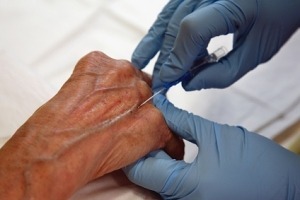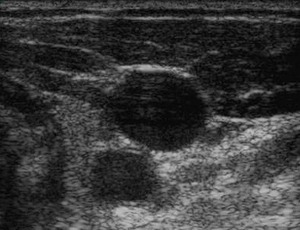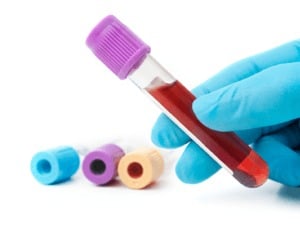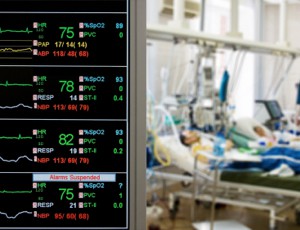Peripheral IV access for apheresis

“Our criteria justify an evidence-based ultrasound-guided standard for evaluation of peripheral venous access for apheresis procedures” Salazar et al (2021).
Midline catheters in children with cystic fibrosis

“There is a high single device success rate when inserting short midlines for 13-day intravenous pulmonary antibiotic therapy in children with cystic fibrosis” Glazner et al (2021).
OPAT patient flow improvement – Full Text

“The use of continuous quality improvement techniques in the OPAT unit can result in substantial and appropriate changes in the process of patient flow, leading to measurable and significant reductions in the variability of care, and optimisation of service” Khan et al (2021).
Routine CVC replacement

“There is clear guidance for indications and maintenance of central venous catheters, but there is no clear guidance on how long a central venous catheter should remain in situ” Morzaria and Carle (2021).
MRSA CLABSI risk

“MRSA carriers and older patients were at higher risks of CVC infection than MSSA bacteremia patients” Ishikawa and Furukawa (2021).
Neonatal tunnelled CVC

“Tunnelled central venous catheters using non-cuffed peripherally inserted central catheters in infants is a safe technique with excellent success rate and minimal complications rates” Nourzaie et al (2021).
Peripheral IV first attempt rate

“The four-item VENSCORE scale could be useful for prospectively identifying adults at risk of first PIVC insertion attempt failure” Angles et al (2021).
CVC complication ten year review – Full Text

“The patients were divided into three groups, jugular, subclavian, and femoral, according to the area where the catheter was inserted” Coskun et al (2021).
CVC site choice

“Individual preference and institutional routine dominate the traditional CVC choice; however, it is lack of high-level evidence” Gu et al (2021).
Pocket-sized ultrasound for vascular access

“PUDs for internal jugular venipuncture are not inferior to SUDs with regard to puncture time and number of punctures, despite differences in visibility and device performance” Yamamoto et al (2021).
Intraosseous access complications

“Our review identified a complication rate of 2.7%, with complications including compartment syndrome, needle breakage, and a previously unreported cutaneous complication of traumatic bullae” Konopka et al (2021).
Vascular access for chemotherapy

“In the delivery of long-term chemotherapy, peripherally inserted central catheters should be considered a cost-effective option when compared with Hickman” Wu et al (2021).
PICC insertion resulted in punctured subclavian vein – Full Text

“This is a rare case of development of bi-lateral chylous pleural effusion (containing parenteral nutrition material) along with pneumomediastinum due to punctured left subclavian vein following insertion of a peripherally inserted central venous catheter (PICC) line” Siddiqui et al (2021).
Implantable port insertion pain prevention

“This study shows that US-guided PECS-1 provides adequate analgesia following TIVAP insertion as part of multimodal analgesia. The PECS-1 significantly reduced opioid consumption” Pişkin et al (2021).
PICC-related bloodstream infection in newborns

“For newborns with low birth weight, longer durations of PICC stay and femoral vein PICC insertion, they may have higher risks of CRBSI, and medical staff should take targeted measures to reduce the development of CRBSI” Hu et al (2021).
Venipuncture and virtual reality

“Given the high participation rate, future studies to evaluate the efficacy of VR are recommended to determine whether an off-the-shelf VR headset can be a low-cost and low-risk tool to improve children’s coping during venipuncture or other related procedures” Canares et al (2021).
PHMB dressing for CLABSI prevention

“Polyhexamethylene biguanide discs appear safe for central venous catheter infection prevention” Pearse et al (2021).
Infusion phlebitis evaluation – Full Text

“Knowing the causes and reasons associated with the occurrence of phlebitis can support decision-making, management and care processes regarding investments in preventive or risk mitigation strategies” Furlan and Lima (2021).
Venipuncture nerve damage

“Immediately, they underwent ultrasound examinations and nerve blocks with oral medication, resulting in full recovery” Kim et al (2021).
Hemodialysis catheter infection

“Staphylococcus aureus (S. aureus) bacteremia (SAB) is associated with morbidity and mortality in patients receiving maintenance hemodialysis (HD)” Sinclair et al (2021).
Vascular access device choice in cancer

“In cancer, use of vascular devices such as peripherally inserted central catheters (PICCs), Hickman-type tunnelled catheters (eg, Hickman), or totally implanted ports (PORTs) is common” Taxbro and Chopra (2021).
Femoral PICC line placement

‘It is safe and feasible to place PICC through a superficial femoral vein under ultrasound combined with ECG positioning technology in patients with superior vena cava syndrome” Xiao et al (2021).
IV drug risk reduction – Full Text

“Nursing risk management can reduce the incidence of errors in clinical pharmacy intravenous admixture services and the incidence rate of infusion reactions, improve infusion safety, and promote the improvement of the subjective satisfaction of patients” Yang et al (2021).
Intraosseous vascular access device comparison

“Each of these devices provides an effective route for fluid resuscitation, drug delivery, laboratory evaluation, and shortening the timeframe for established vascular access, provided that the person obtaining the access is acquainted with the use of the device” Drozd et al (2021).
CICC complication prevention – SIC protocol

“This paper describes a standardized protocol (S.I.C.: Safe Insertion of Centrally Inserted Central Catheters) for the systematic application of seven basic beneficial strategies to be adopted during insertion of central venous catheters in the cervico-thoracic region, aiming to minimize immediate, early, or late insertion-related complications” Brescia et al (2021).
CLABSI in critically ill patients

“Our findings suggest that catecholamine inotropes is an independent risk factor for catheter-related infections in critically ill patients undergoing CRRT” Liu et al (2021).
PICC nursing care

“The purpose of this study was to understand nurses’ perspectives about PICC implementation in their clinical practice” Salgueiro-Oliveira et al (2021).
Pediatric vascular access – Full Text

“The objective of this study was to assess adherence to guidelines for the placement of VADs in a pediatric setting” Moreal et al (2021).
Quality PICC care

“To analyze the effect of multidisciplinary cooperation mode (MCM) led by infusion nurse specialists (INSs) on peripherally inserted central catheters (PICC) catheterization and indwelling nursing quality” Jie et al (2021).
Fatal complications of tunnelled CVC

“If a perforation with relevant vascular damage is suspected, we recommend leaving the dilator/introducer/catheter in place to reduce major hemorrhage until the vascular or cardiothoracic surgeon can fix the problem” Schuepfer et al (2021).

